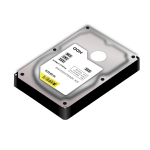Насколько реально, использовать его в обычном десктопе с Intel Core i5-7. И как он «видится в системе», как обычный CPU с большим количеством ядер, или как GPU?
Ответ на:
комментарий
от anonymous

Ответ на:
комментарий
от anonymous_sama

Ответ на:
комментарий
от AntonyRF

Ответ на:
комментарий
от AntonyRF
Ответ на:
комментарий
от JacobTwoTwo



Ответ на:
комментарий
от i-rinat
Ответ на:
комментарий
от Deleted

Ответ на:
комментарий
от Deleted
Ответ на:
комментарий
от AntonyRF


Ответ на:
комментарий
от Sahas
Ответ на:
комментарий
от i-rinat
Ответ на:
комментарий
от AntonyRF
Ответ на:
комментарий
от Sahas
Ответ на:
комментарий
от Einstok_Fair

Ответ на:
комментарий
от NiTr0

Ответ на:
комментарий
от Sahas
Ответ на:
комментарий
от anonymous

Ответ на:
комментарий
от Sahas
Ответ на:
комментарий
от NiTr0

Ответ на:
комментарий
от Sahas
1 декабря 2018 г.

Ответ на:
некрофилю
от fenicks
Вы не можете добавлять комментарии в эту тему. Тема перемещена в архив.
Похожие темы
- Форум Можит ли старое железо потянуть какие-нибудь игры если установить Linux? (2021)
- Форум KDE Торт? (2011)
- Форум Intel выпустила сопроцессоры Xeon Phi нового поколения (2014)
- Форум Высокие обороты процессора (Cpufreq) (2014)
- Форум Новые камни Intel, 4/8 - всё (2017)
- Форум Расход %CPU при просмотре тестового видео на YouTube. (2010)
- Форум CSGO не стартует. Vulkan (2022)
- Форум Медленный TF2 (2013)
- Форум Intel Xeon Phi в 2024 (2024)
- Форум Какой дистрибутив лучше всего подойдет для слабого железа ? (2021)
